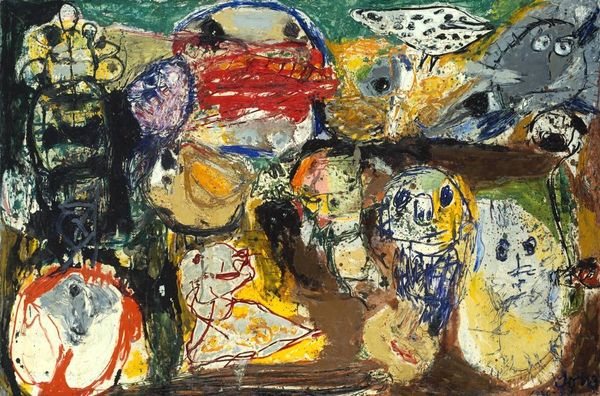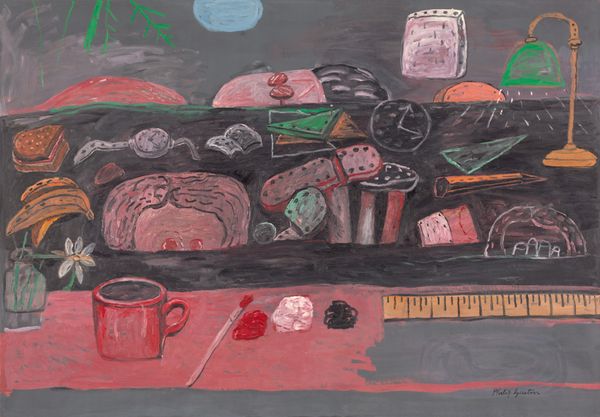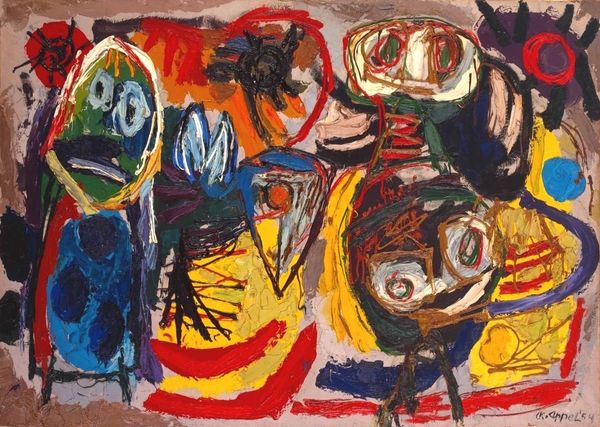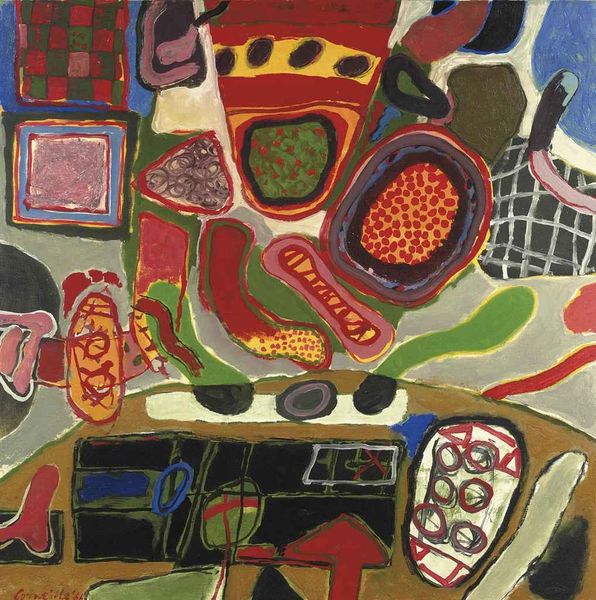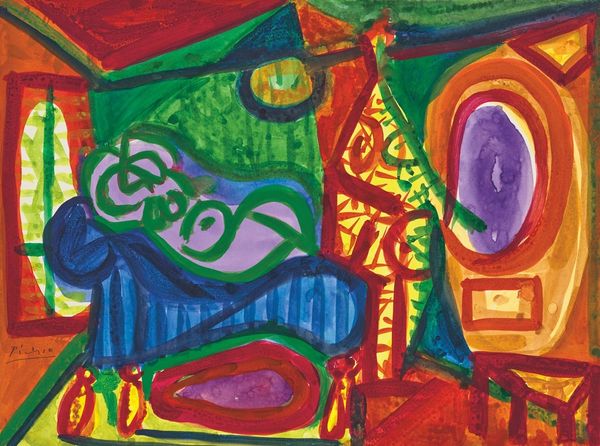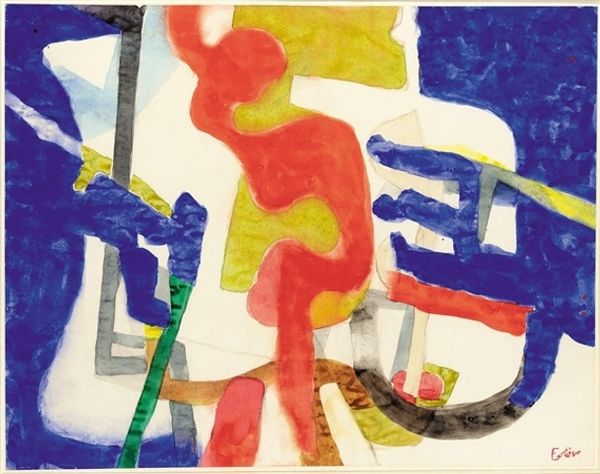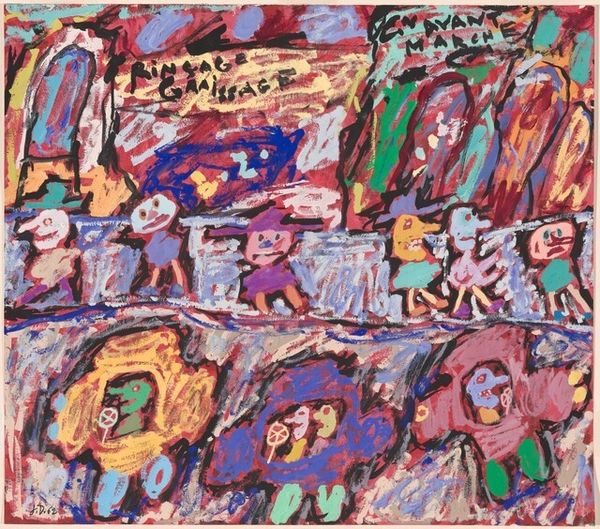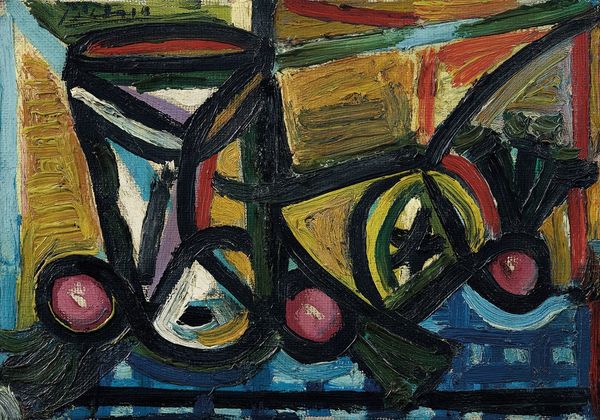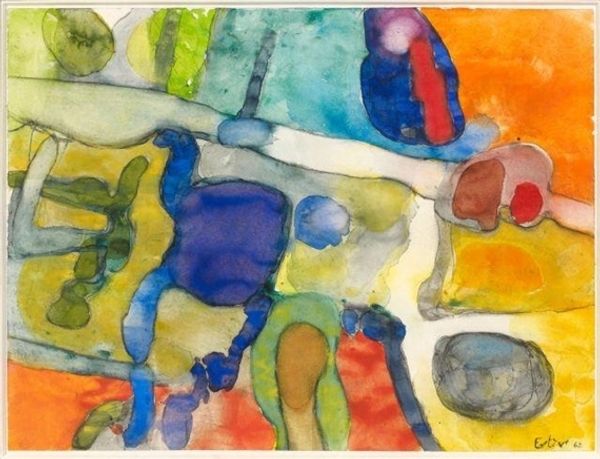
#
cobra
Copyright: Corneille,Fair Use
Editor: Here we have "Solo de piano," an acrylic on canvas painting created by Corneille in 1964. I'm struck by its almost childlike quality and bold colors; there's a playfulness here that I find really appealing. What's your take on this piece? Curator: The playfulness you identify aligns with the art world's shifts in the 1960s. We see the rise of Pop Art and a general loosening of artistic conventions. What's interesting here is how Corneille incorporates a kind of organized chaos, a reflection of the societal and political turbulence of the time. Does the title "Solo de Piano" give you any ideas considering this historical background? Editor: Maybe it suggests improvisation and breaking away from traditional structures? The solo pianist creating something new on the spot... Curator: Precisely. There's a democratization of art happening. Everyday objects and experiences became legitimate subject matter. Abstract Expressionism was seen by some as elitist; Pop Art sought to be accessible, a reflection of mass culture and a rejection of the high-art seriousness of preceding movements. Think about graffiti as folk art, breaking the institutional framework, too. Corneille’s Fauvist influence also feels important here. Do you agree? Editor: Yes, I see the influence of Fauvism now, particularly in the vibrant, non-naturalistic use of color! I hadn't fully connected that. So, is this artwork suggesting how culture can push art into new, more disruptive directions? Curator: Exactly. And by doing so, question established norms. This painting embodies a cultural shift, where art becomes more of a social commentary, accessible and immediate. Editor: That’s fascinating! I'm now seeing so much more beyond just the playful surface of "Solo de Piano." Curator: And hopefully, understand better how the reception of this kind of works reshaped art history, for better or for worse!
Comments
No comments
Be the first to comment and join the conversation on the ultimate creative platform.
